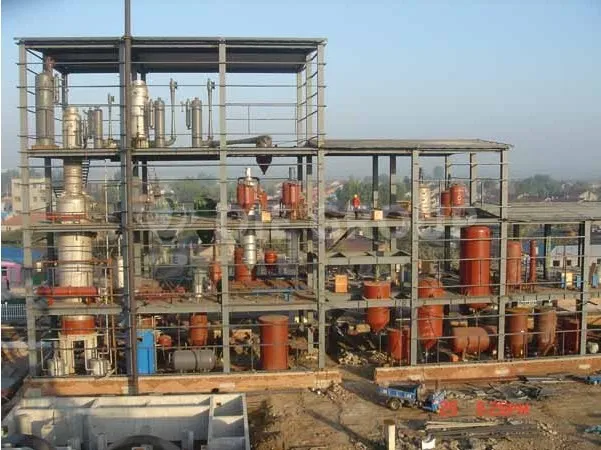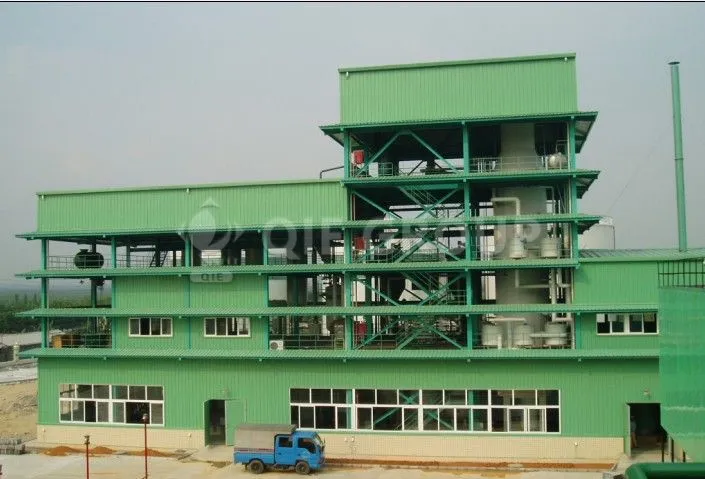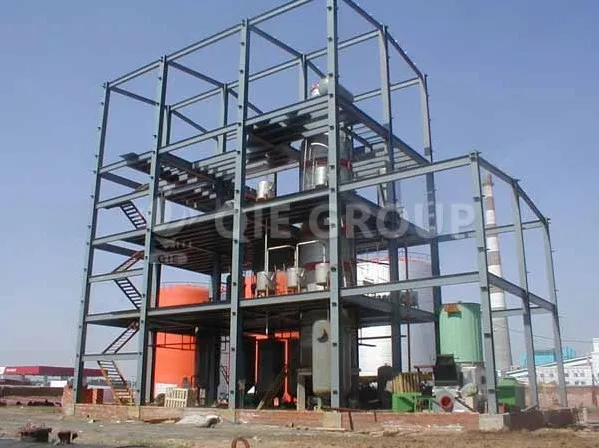Henan Qiyi Machinery Equipment Co., Ltd. has launched a large-scale edible oil refining production line for oil impurity removal, specifically designed to meet the large-scale continuous production needs of oil processing companies. This production line utilizes advanced impurity separation technology and high-performance equipment to efficiently remove impurities and odors from crude oil, significantly improving the purity and stability of the oil, and ensuring that the final product meets international food safety standards. The product complies with ISO 9001 quality management system certification, features a sturdy and durable structure, and is easy and flexible to operate, making it suitable for the refining of a variety of oil raw materials. Henan Qiyi Machinery adheres to the principle of balancing innovation and quality, providing customers with equipment installation and commissioning, operator training, and long-term technical support to help them achieve high-quality and stable production. With its superior quality and professional technology, Qiyi Machinery has become a trusted partner in the global grain and oil machinery industry.
(1) Degumming process: Degumming is a process of removing soluble impurities from crude oil by physical, chemical or physicochemical methods. Edible oil with a high phospholipid content tends to produce foam, smoke and odor when heated, and phospholipids oxidize at high temperatures, causing the oil to turn brown, affecting the flavor of fried foods. The principle of degumming is to use the property that phospholipids and some proteins are soluble in oil in a sewage state, but insoluble in oil after hydration. Hot water or steam is added to the crude oil, and the oil is heated and stirred to about 50°C. The oil is allowed to stand and separate into layers, allowing the water phase and the oil phase to separate and remove phospholipids and some proteins.
(2) Deacidification process: Free fatty acids will affect the stability and taste of oils. Alkali refining is used to neutralize free fatty acids and achieve deacidification.
(3) Decolorization process: Crude oil contains pigments such as chlorophyll and carotene. Chlorophyll is a photosensitive substance that affects the stability of oil. Other pigments will affect the appearance of oil products. Pigments are removed by adsorption with adsorbents.
(4) Deodorization process: There are odor molecules in the oil, which mainly come from the oxidation products of oil. Vacuum distillation technology is used and citric acid is added to chelate excess metal ions, inhibit oxidation, and remove the bad odor.
The hazards of colloidal impurities mainly include:
- Reduce the stability of oils and fats, and easily absorb moisture and hydrolyze;
- Affects the refining process, causes emulsification, increases the amount of decolorant used, and causes color reversion after deodorization;
- It affects the use of oil, especially it is easy to foam when heated.
The basic principle of hydration degumming:
- Pre-hydration stage: Due to lack of water, phospholipids are completely dissolved in the oil in the form of internal salt structure without forming precipitation.
- After heating with hot water: the molecular structure of phospholipids changes into a hydrated state and strongly absorbs water.
Hydration temperature classification and application:
- Low temperature hydration (20-30℃): The amount of water added is about 0.5 times the colloid content of the crude oil, and the sedimentation time is not less than 10 hours. It is suitable for crude oil with low colloid content and small enterprises.
- Medium temperature hydration (60-65℃): the amount of water added is 2-3 times the colloid content, and the sedimentation time is not less than 6 hours. It is often used for peanut oil degumming.
- High temperature hydration (85-95℃): The amount of water added is 3-3.5 times the colloid content, the hydration time is about 30-40 minutes, and the sedimentation separation is 4 hours. It is suitable for soybean oil with a high colloid content.
Description of critical condensation temperature:
- Refers to the lowest temperature at which the colloidal dispersed phase begins to condense.
- The larger the dispersed phase particle size, the higher the critical coagulation temperature.
- The more water is added, the larger the particle size will be and the higher the critical temperature of coagulation will be.
Key points of process operation:
- First determine the optimal operating temperature;
- Calculate the amount of water to be added based on the colloid content;
- Adjust the temperature to promote hydration and coagulation of the colloid.
Example of operating conditions (high temperature hydration method):
- The impurity content of crude oil after filtration is ≤0.2%;
- Hydration temperature 90-95℃;
- The amount of water added is 3-3.5 times the colloid content;
- Hydration time 30-40 minutes;
- Sedimentation separation time is about 4 hours;
- Drying temperature is not less than 90℃;
- The operating pressure is about 4.0kPa.
If the crude oil comes from a refined leaching process, the desolventizing temperature is about 160°C, the operating pressure does not exceed 4.0 kPa, and the desolventizing time is between 1 and 3 hours.
Specific process steps:
- Preheat crude oil to about 80°C;
- Add hot water, the amount of water is 3.5 times the colloid content, and mix thoroughly;
- Let it stand and keep warm for 5-8 hours;
- The upper clear oil is discharged, and the oil-rich micelles are left in the tank to be mixed with the next batch;
- Heating, drying and vacuum dehydration, temperature 100-105℃, vacuum degree 680-700mmHg;
- Heat and desolventize at a temperature of about 140°C, the same vacuum degree as above, a steam flow rate of ≥30kg/h·t oil, and a time of 20-60 minutes;
- To rehydrate oily feet, add 4%-5% powdered salt and stir, let it stand to drain the salt water, skim the oil, and then add boiling water and fine salt and continue stirring.
In addition, the medium-temperature hydration method and the low-temperature hydration method are suitable for different process conditions and raw material colloid content respectively. Selecting the appropriate hydration temperature and water amount can achieve the optimal degumming effect.
The colloid content of crude oil is usually between 0.5% and 5%, while the colloid content of some oils can be as high as 20%.
General operation process of degumming:
- Crude oil is pre-filtered to control the impurity content below 0.2%;
- Measuring crude oil;
- Heat to 80-85°C;
- Mix thoroughly with 90℃ hot water;
- React for 40 minutes;
- Separate the aqueous phase and flocculents by using a disc centrifuge;
- Heating dehydration drying, moisture control at 0.2%-0.5%, temperature about 95℃, vacuum assisted drying;
- Cool to 40°C and store.



